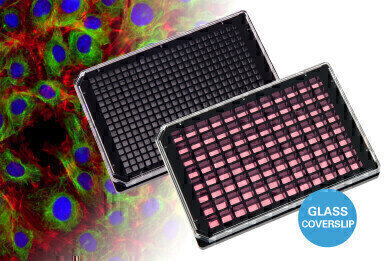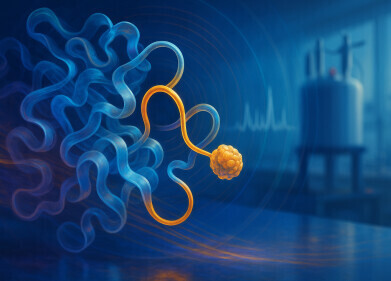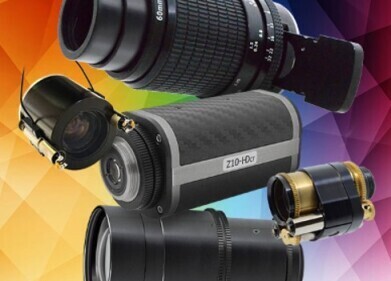Microscopy & microtechniques
Glass Bottom µ-Plates Enable High Throughput and Super-Resolution Microscopy
Jan 31 2023
Microscopists now have high-throughput possibilities for super-resolution and TIRF thanks to Ibidi's new glass bottom µ-plates.
When using the µ-Plate 96 Well or 384 Well Black Glass Bottom, the samples are observed through a thin #1.5H D 263 M Schott glass coverslip with a thickness of 170 µm +/- 5 µm. Due to its superior optical quality, the µ-Plates are not only suitable for standard microscopy applications, but also ideal for total internal reflection fluorescence (TIRF), super-resolution microscopy (STED, SIM, (F)PALM, (d)STORM), and fluorescence correlation spectroscopy (FCS).
When using the µ-Plate 96 Well or 384 Well Black Glass Bottom, the samples are observed through a thin #1.5H D 263 M Schott glass coverslip with a thickness of 170 µm +/- 5 µm. Due to its superior optical quality, the µ-Plates are not only suitable for standard microscopy applications, but also ideal for total internal reflection fluorescence (TIRF), super-resolution microscopy (STED, SIM, (F)PALM, (d)STORM), and fluorescence correlation spectroscopy (FCS).
The µ-Plates have square wells and feature optimal flatness properties, which are crucial for high-resolution microscopy in screening applications. The glass coverslip provides high accuracy and facilitates imaging from well-to-well across the entire plate. Additionally, the black walls ensure low well-to-well crosstalk in fluorescence microscopy.
The µ-Plates are ideal for the cultivation, high throughput screening (HTS), and high-resolution microscopy of cells. They meet the requirements of the ANSI/SLAS standard, and are therefore compatible with a variety of imaging systems, pipetting robots, and plate readers. Researchers who would like to test the new µ-Plate 96 Well or 384 Well Black Glass Bottom with their own experiments can get free samples.
More information online
Digital Edition
Lab Asia Dec 2025
December 2025
Chromatography Articles- Cutting-edge sample preparation tools help laboratories to stay ahead of the curveMass Spectrometry & Spectroscopy Articles- Unlocking the complexity of metabolomics: Pushi...
View all digital editions
Events
Jan 21 2026 Tokyo, Japan
Jan 28 2026 Tokyo, Japan
Jan 29 2026 New Delhi, India
Feb 07 2026 Boston, MA, USA
Asia Pharma Expo/Asia Lab Expo
Feb 12 2026 Dhaka, Bangladesh

.jpg)
-(2).jpg)
















